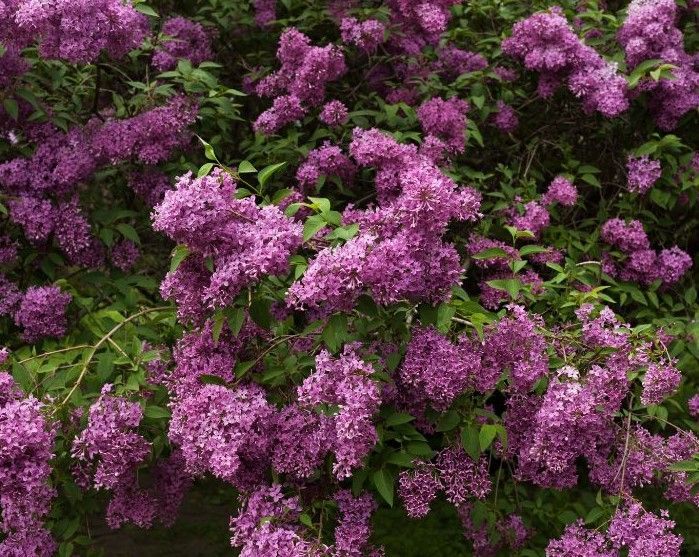How to Grow and Care for the Pawpaw Tree
The pawpaw is a small, deciduous tree that yields the largest fruit native to North America. Pawpaw trees can grow to a height of about 25 feet and feature maroon-colored blossoms with 6 petals in spring. When grown in shady and protected areas of established forests, they only get to be 2 to 12 feet tall. The leaves are dark green, shiny, and oval-shaped with pointy ends. They can grow up to 12 inches in length. In the fall, the foliage turns varying shades of yellow.
Appearance and Growth:
Pawpaw trees typically reach a height of 15 to 30 feet (4.5 to 9 meters) and have a relatively short trunk with a spreading canopy of large, elliptical leaves. The leaves are dark green and can be up to a foot long. In the fall, the foliage turns varying shades of yellow. The tree has attractive maroon or brown flowers that have a foul odor, which attracts flies for pollination.
Fruit:
These trees are famous for their fruit, which ripens in fall. The pawpaw fruit is frequently described as custard-like with a flavor that is a cross between a banana and a mango. Take note that while the fruit is edible, you should never eat the skin or seeds of this fruit. Pawpaw contains annonacin, which is toxic to nerve cells.
Habitat:
Pawpaw trees are found in the wild in rich, moist, and well-drained soils. They are often seen in the understory of forests, along riverbanks, or in other areas with similar conditions. They are hardy in USDA hardiness zones 5 to 8. You’ll be most successful in growing the pawpaw tree if your climate provides the seasonal swing that these trees are accustomed to since the dormancy of winter prepares the tree for a productive growing season.
Propagation: Propagation by cuttings is possible for pawpaw trees but has a high failure rate. It's not considered the most surefire way to propagate these trees. Grafting or budding is a more common method for propagating pawpaw trees to ensure that the resulting tree will have the desired fruit characteristics.
Pawpaw trees can be propagated through seeds, but they can take several years to bear fruit if grown from seeds. Follow these steps to grow pawpaw trees from seed:
- Scoop out the seeds from a ripe pawpaw fruit.
- Next, scarify the seeds. This involves scratching the shell of the seed but not the seed itself. Use sandpaper or a file.
- In fall, you can direct sow the seeds outside where they’ll naturally stratify over the winter and sprout the following summer. Alternatively, you can stratify the seeds indoors by placing them in a cold location for 90 to 120 days. If you choose indoor stratification, Perdue University recommends placing the seeds inside a plastic bag with moistened sphagnum moss to prevent the growth of mold.2
- Plant seeds once the soil temperature is between 75 and 85 degrees.
Cultivation:
When planting pawpaw trees, it's essential to provide them with a location that receives partial shade. They prefer rich well-drained soil with a slightly acidic to neutral pH. Pawpaw trees require regular watering, however it’s important the soil is draining efficiently, and you don’t allow this tree to become waterlogged. Overwatering will cause yellowing leaves. Mulching around the base of the tree can help retain moisture and control weeds. Nutrient soil is important for healthy growth and fruit production, so it’s generally recommended to fertilize pawpaw trees at least twice a year, once in spring and again in early summer. your best option may be to add organic matter to the soil using compost, fish emulsion, manure, or a combination of all three.
Pollination:
Pawpaw trees are not self-pollinating, which means they require cross-pollination between two genetically distinct trees to produce fruit. In the wild, flies are the primary pollinators, attracted by the foul-smelling flowers. In cultivation, it's common to plant two or more different pawpaw varieties to ensure cross-pollination. Even if you have genetically varied trees planted near each other, it can be hard to attract pollinators to pawpaw trees. As a result, the flowers may not become pollinated and consequently fail to bear fruit. To solve this problem, one suggestion is to use pollinate pawpaw trees by hand. Find the male flowers, which will be wide open and deep maroon color. The stamen will be visible and should be covered with pollen. Place a small plastic bag underneath the bloom and gently tap the back of the blossom to drop pollen into the bag.
Right away, find a female blossom on another pawpaw tree. Mature female blossoms will also be maroon but may still be partly green and will always be only partially open. Gently open the blossom with your fingers enough to reach the paintbrush inside. Then, after dusting the paintbrush with harvested pollen, dab the stigma inside the flower.
Harvesting:
Pawpaw fruit is typically harvested in the late summer to early fall when they are fully ripe. The fruit should be picked carefully to avoid bruising and used or consumed promptly since they have a short shelf life.
Pests and Diseases:
Pawpaw trees can be susceptible to some pests and diseases, including pawpaw fruit fly, fungal diseases, and various insects. Proper care and monitoring can help manage these issues.
Overwintering:
Pawpaw trees are no stranger to winter weather and the cold season provides a period of dormancy necessary for fruit production in the following year. Since these trees are hardy to -20 degrees Fahrenheit, there is usually no additional care required for successful overwintering mature pawpaw trees. There’s no need to water during the tree’s dormancy.
However, a young pawpaw tree in a pot should only be planted in spring. To overwinter a young tree successfully, place it in a sheltered location where temperatures will remain above freezing.
Cultural Significance:
Pawpaw fruit has a long history of consumption by Native American tribes and early European settlers. It is now gaining popularity as a unique and delicious fruit in contemporary cuisine and as a niche crop for small-scale growers.
Conservation:
Some efforts are being made to conserve and promote pawpaw trees due to their ecological importance and cultural significance. This includes educational programs and initiatives to protect wild populations.
Check out the latest...








